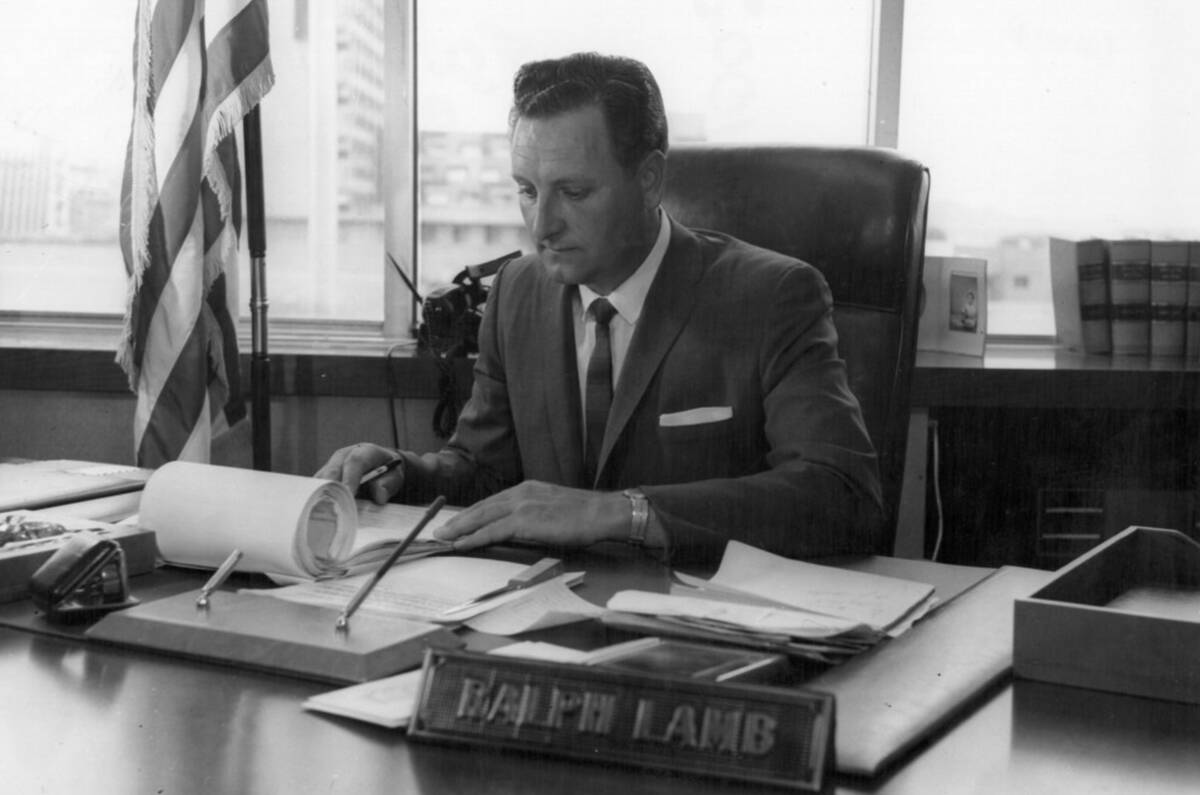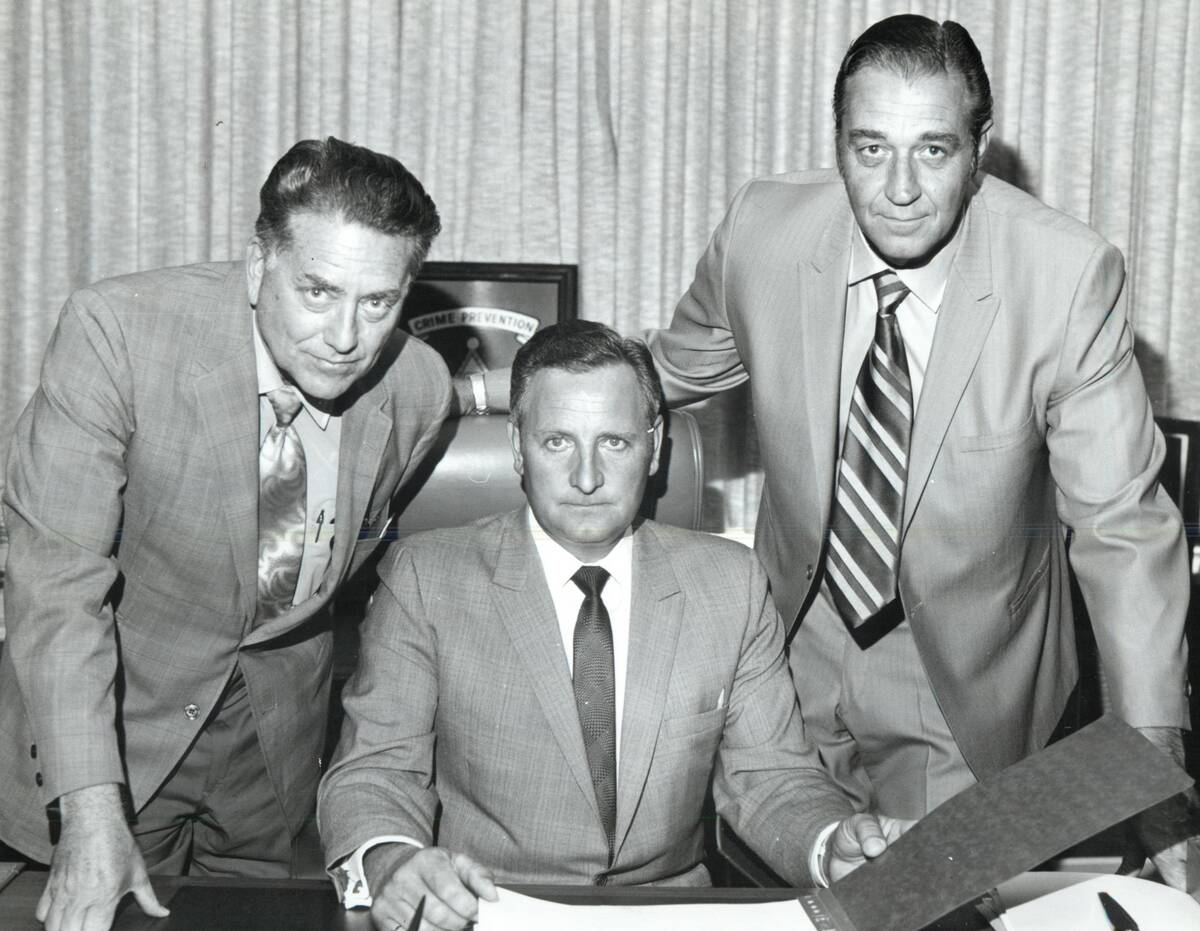How Las Vegas police, county sheriff’s office formed Metro 50 years ago
The Metropolitan Police Department will celebrate its 50th year as a law enforcement organization on July 1, but before the department came into existence there was a debate over money, benefits and even mustaches.
Las Vegas police and the Clark County sheriff’s office merged into the Las Vegas Metropolitan Police Department after then-Gov. Mike O’Callaghan signed a law reassigning 1,044 officers in April 1973.
The elected Clark County Sheriff at the time, Ralph Lamb, took over both departments, while the Chief of Las Vegas police, John Moran, became undersheriff. The sheriff’s office moved out of the downtown Clark County courthouse and Metro’s headquarters opened at the newly built Las Vegas City Hall.
Metro would stay there until 2011, when they moved into their headquarters at Martin Luther King Boulevard and Alta Drive.
Metro was formed, politicians told the Review-Journal at the time, to consolidate finances and increase efficiency. City and county police were fighting for federal funding, and calls to one agency were often transferred to the other due to close jurisdictional boundaries.
These days, two-thirds of Metro calls are from unincorporated Clark County, and Metro is funded by the same two-thirds and one-third ratios from county and city money, respectively. Throughout this year, Metro has celebrated the anniversary of their name with cake, reunions and commemorative patches.
Early hurdles
When they agencies merged, city council members were not thrilled with O’Callaghan’s decision to sign the bill. Councilmen Hank Thornley and Myron Leavitt told the Review-Journal in April 1973 that county employees were taking city jobs, and the law would make city police enforce county ordinances.
Councilman Alexander Coblentz, the namesake of Alexander Road, said the bill was giving control of the city to an “outside organization.”
Lamb decided that all patrolmen would work four 10-hour shifts. Many officers were assigned new P numbers, or personal identifying numbers, because of the overlap between the agencies. Lamb also had to work out new uniform colors, phone numbers and squad car colors.
Even after the bill was signed, Lamb wanted to clear up one final point with the Civil Service Board. City officers had received the pay benefits they asked for, but they had to fight to continue wearing mustaches.
The “mustache conflict,” as the Review-Journal dubbed it, was still not solved by September 1973, when the board members said they would need to study if mustaches impacted officers’ work in other jurisdictions.
“One said he was now less effective as an officer because citizens he deals with are aware he was required to shave off his mustache and had less respect for him because of it,” the newspaper wrote at the time.
The law won.
The Civil Service Board ruled a month later that officers could have “neatly-trimmed mustaches” no longer than a quarter-inch past the corners of their mouths.
Contact Sabrina Schnur at sschnur@reviewjournal.com or 702-383-0278. Follow @sabrina_schnur on Twitter.
























